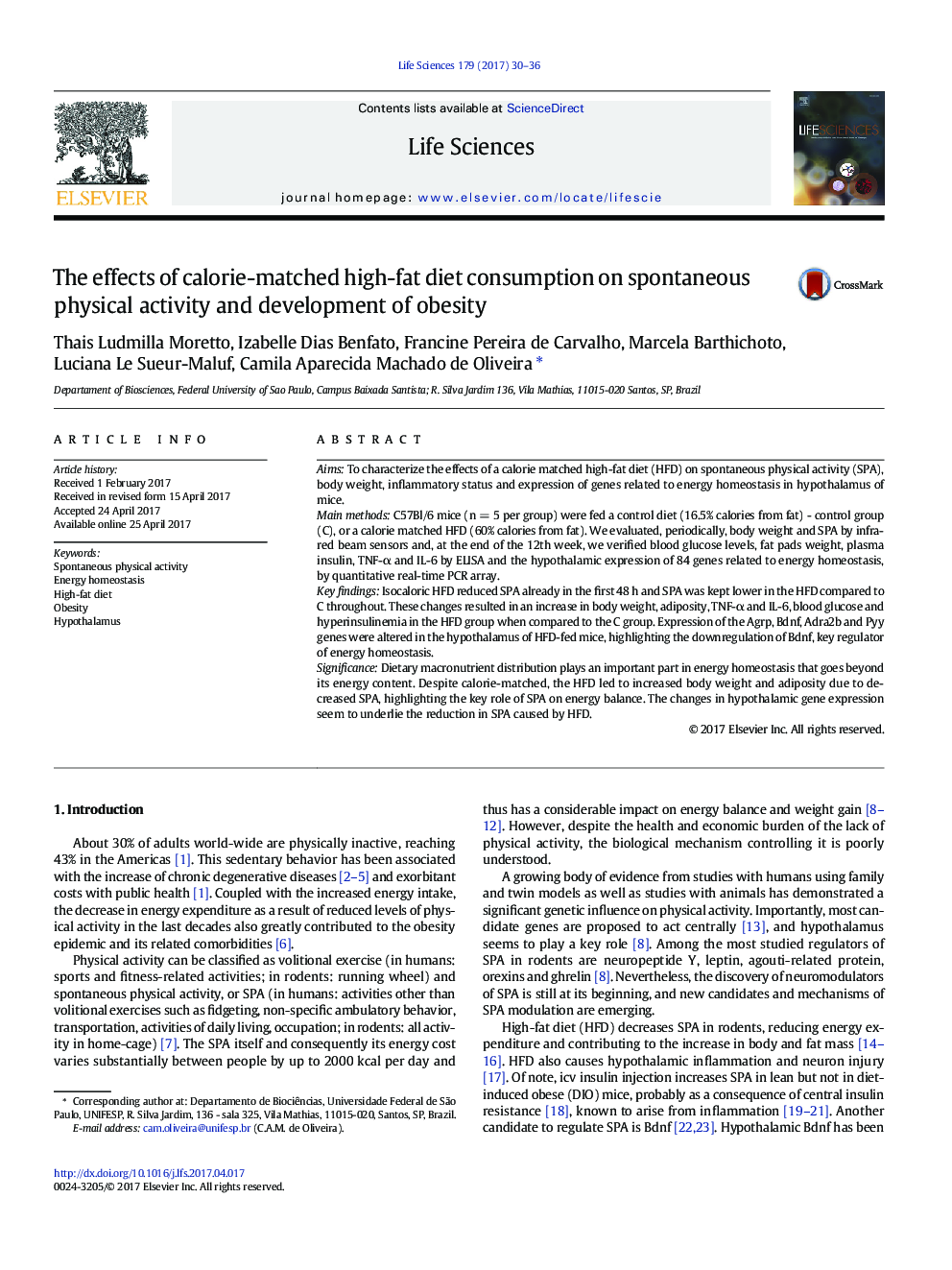| Article ID | Journal | Published Year | Pages | File Type |
|---|---|---|---|---|
| 5556916 | Life Sciences | 2017 | 7 Pages |
AimsTo characterize the effects of a calorie matched high-fat diet (HFD) on spontaneous physical activity (SPA), body weight, inflammatory status and expression of genes related to energy homeostasis in hypothalamus of mice.Main methodsC57Bl/6 mice (n = 5 per group) were fed a control diet (16.5% calories from fat) - control group (C), or a calorie matched HFD (60% calories from fat). We evaluated, periodically, body weight and SPA by infrared beam sensors and, at the end of the 12th week, we verified blood glucose levels, fat pads weight, plasma insulin, TNF-α and IL-6 by ELISA and the hypothalamic expression of 84 genes related to energy homeostasis, by quantitative real-time PCR array.Key findingsIsocaloric HFD reduced SPA already in the first 48 h and SPA was kept lower in the HFD compared to C throughout. These changes resulted in an increase in body weight, adiposity, TNF-α and IL-6, blood glucose and hyperinsulinemia in the HFD group when compared to the C group. Expression of the Agrp, Bdnf, Adra2b and Pyy genes were altered in the hypothalamus of HFD-fed mice, highlighting the downregulation of Bdnf, key regulator of energy homeostasis.SignificanceDietary macronutrient distribution plays an important part in energy homeostasis that goes beyond its energy content. Despite calorie-matched, the HFD led to increased body weight and adiposity due to decreased SPA, highlighting the key role of SPA on energy balance. The changes in hypothalamic gene expression seem to underlie the reduction in SPA caused by HFD.
